The signs were not good at all.
First off, we were headed back to the Black Rock desert to visit people who, incredibly, had never left the playa. Some of them had been there since July, and it seemed the only question was just how cracked out they would be.
All their friends and everyone else who’d been to Burning Man had left them behind. They had to know that we’d been eating sushi and pizza and burritos, and we’d been showering whenever we felt like it, and when we used the bathroom, it didn’t the way only a PortaPotty can stink at noon.
So these folks had to be bitter. And they were probably resentful, too, because who wouldn’t be? By the time we rolled into town, they’d already been working Playa Restoration for days. And they had a lot more mooping to look forward to. They’d been walking slowly across the empty desert, sometimes getting down on their hands and knees, to pick up what the partygoers had left behind.
But worst of all, these lost souls might even be hostile, and that made us nervous. Who the f—were we, all clean and shiny and caught up on sleep, to come sashaying into town? What the f—were we doing there, and who the f—did we think we were?
And then there was the trip itself.
The stench of broken dreams had been with us since before Truckee. The sky was dark orange, clouded by the smoke from fires ravaging Northern California. Reno seemed like some Saudi Arabian town in the middle of a dust storm. The sky there burnt ember, and it smelled of smoke and destruction.
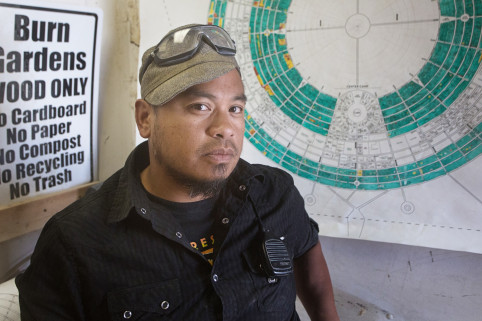
By the time we got to the other side of Nixon, where the beauty of the ancient lakebed usually hits us in the face, we were almost ready to turn back. We couldn’t see more than a couple of hundred yards on either side of the road. There was no sun, no glowing, golden hills. There was only smoke, and the growing sense of dread that this was all a very bad idea.
—
D.A. has been doing Playa Restoration for fifteen years, even though they haven’t called it “Playa Restoration” for nearly that long. He’s been around since the days when only a couple of dozen people would stick around after everything had been trucked back to the ranch, after everything had been stowed away for the year.
Brukka was telling us about the old days, too, when it was a just small bunch of really ragged people who did the cleanup. They didn’t eat well, mostly stuff out of cans, and they didn’t sleep much. They did drink pretty hard, though, which only served to make things … volatile.
There were no fluffers, there were no support teams, and no one really knew they were still out there. There was no such thing as a Moop Map — there was only the need to leave no trace.
The BLM has always made Burning Man clean up after itself. It’s pretty simple, really: Officers will come to random points in what had been Black Rock City, and they’ll put stakes in the ground, and they’ll stretch out lines. Then they’ll inspect the circles of desert defined by those lines, and if they find too much crap … boom. Inspection fail. Permit pulled. Event over.
So this Playa Restoration is serious business, and it is quite literally true that the future of the event depends on leaving the desert the way we found it.
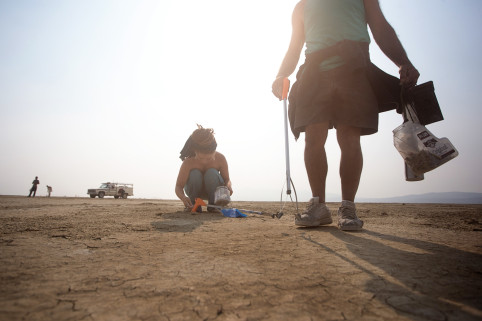
And all the work is being done by people who haven’t seen home in months, and who have spent very little time with anyone but each other.
—
The work itself is tedious and repetitive, but oddly egalitarian. You don’t need special skills or tools to walk slowly along the desert floor, looking for little bits of matter out of place.
Jedi quoted D.A. when she talked about what it was like to be on the lines, picking up after people. “We’re supporting the citizens of Black Rock City,” she said. “We’re not doing things for them, but we’re helping them do it better.”
The work may be simple, but it is a mental challenge. It’s close quarters. You’ve been out here with the same people, doing hard physical things in less-than-ideal conditions. You’re not making much money. And did we mention that it is hot? The mental pressure builds up.
One of Coyote’s duties is to make sure the pressure doesn’t spill over. “My job is to make sure everyone is still having a good time,” he says through false buck teeth that stick out at odd angles and look all decayed. Coyote’s in character on the lines today — he’s Buford from Arkansas, and he intends on staying in character all day.

Just then a dirt clod comes whizzing by our head.
“Hey, he’s not in the game,” Effin Andy says. “He’s got expensive camera gear on him.”
That’s one of the things people do on the lines to break the boredom: They throw dirt clods at each other. Some folks wear helmets so they can walk with impunity. Others let it be known that the dirt clod game is getting on their last nerve, and they don’t want any part of it. D.A. has made it clear that if someone opts out of the game, they are not to be hassled.
There are three lines of people walking along looking for moop, each line with about 30 people in it, and the people are about an arm’s length apart. There are three “line bosses” – Starchild, Weldboy and Sleep Dep.
There are also scribes, who make notes on iPads about what kind of moop is found where, and oscillators, who drive around in trucks marking the hot spots. Off in the distance, special forces teams are “busting cones” — cleaning up areas that the lines have targeted for special attention. Even further out is Bob Tuse, the dune buster, who is flattening raised portions of the playa.
Bustin Dustin is in charge of inspecting all the art sites, and Bubblegique plots all the data that is being collected onto a computer map, which will be used as a guide to color the final version of the Moop Map. Spoono has set up camp along the shoreline, and this year he pounded miles of stakes to keep visiting rocketeers from speeding through the DPW work site.
But most essentially, Playa Restoration is a bunch of people walking along in a line, looking for what other people have missed, so that the BLM will continue to issue a permit for the event. It’s not hard, but it’s long, and your mind tends to wander.
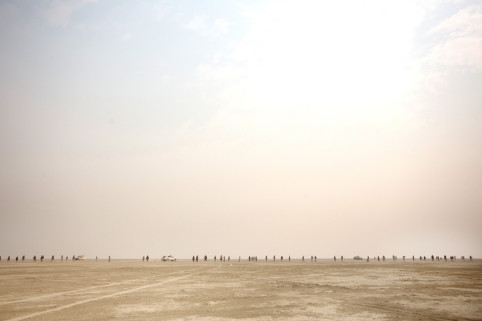
“It’s all mental,” Andy says. “Sometimes I’m more tired at the end of a day of Resto than I am doing Spires,” and it’s hard to believe. Working Spires means pounding rebar into the ground, lifting heavy wooden poles upright, setting them straight, and doing it over and over again.
“But this is so boring,” Andy says.
—
With some spectacular exceptions, the city has been turning out very green this year (yay you!). Even D.A. said it was the cleanest he had ever seen the city, at least to that point. Ironically, though, this had brought new challenges. “When it’s really green,” Starchild said, “it makes it really easy to start missing things. Once you see moop, you’ll start to see moop everywhere … but with these big green blocks, it’s really easy to zone out. … You look up for three or four steps and you miss the hot spot. … I tell my line to not use the moop sticks, to bend down just to keep the blood flowing.”
People are already stiff and tired from the long days of kneeling and bending and picking up. They are bussed to the playa in the morning, and roll call is at 8:45 a.m. You haven’t heard roll call until you’ve heard a DPW roll call; it obliterates the level of wise-ass you might have attained in high school.
Food is communal; It’s prepared by DPW, for DPW. There are no vendors, no commissary, no outsiders. Breakfast and dinner are eaten at the Saloon in Gerlach, along big picnic benches in the back room, or al fresco on tables that have been set up outside. The food isn’t served family style, but it is consumed that way. You eat with your friends (and you ignore the people who might be driving you nuts).
Lunch is taken on the playa, where you get maybe an hour to kick back in the shade, or kick around a soccer ball in the middle of the school buses that are providing a little break from the sun. Then D.A. will yell, “Get on the bus!” and off you go into the desert again.
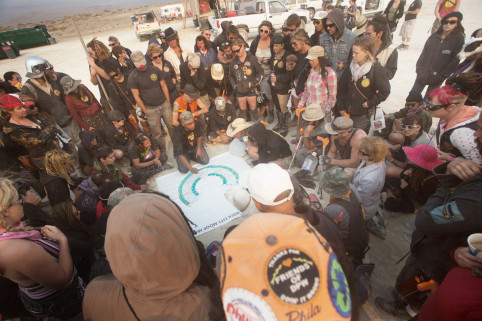
Each of the lines has its own personality, maybe taken from the line bosses. Starchild is surprisingly stern, trying his best to keep his forces lined up and even with the other lines, which have smaller areas to cover because they are closer to the inner roads.
Sleep Dep’s line seems like it might be more suited for the loners, or the people who mostly want to be left alone as they do their job. Or they just might want to be quiet for a day.
Weld Boy is more tolerant; the dirt clods fly pretty much all day long. But it’s a skill to blend jackassery and discipline, to find the right balance between yelling and joking. But underneath it all, there’s a sense of seriousness and attention to detail. This is an anal-retentive’s dream job, or worst nightmare.
—
They don’t like to call them the zombie lines anymore, even though that’s mostly what the people resemble: stiff, slow walkers, out in the middle of nowhere, with no one else around, moving inexorably forward.
You walk along this faceless, featureless, orange moonscape, and sometimes you think about what took place here – the art, the parties, the hookups, the meltdowns, the synchronicity, the heartbreak, the discoveries, the conversations, the amazement.
You let the lines walk ahead of you and you are engulfed by the wind and the vastness. You’ve become a “moonwalker.” You see all signs of humanity vanishing in the distance. A few more steps and you won’t be able to see anyone anymore. It’s eerie, and more than a little disturbing. You hurry back to the line.
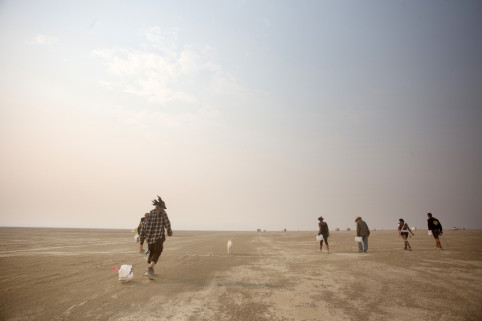
In previous years, there have been “mutinies,” when the tedium and the frustration and the heat and the clashes became too much, and the crews put down their moop sticks and just took off. They headed for the far end of the playa, with no trash fence to get in the way. They just weren’t going to take it anymore, and for a day, they didn’t.
—
If you’ve been to San Francisco’s Decompression event, you’ve seen these DPW folks, the ones just back from Resto, huddled in the darkness, barely visible from the street. They’re wearing dark clothes, but they’re identifiable by the orange splash of the DPW logo on their sweatshirts or T-shirts. Some of them will have distant, shell-shocked expressions on their faces. They’ve been in the desert a long time. And even for the ones who are lucky enough to be coming back to jobs and families and boyfriends and girlfriends, coming back to the world is a shock.
The end of the desert time is drawing near. There was a resume-writing workshop after dinner the other night, and one of the trucks has a large stuffed animal tied on to its rear bumper. That would be the Exit Strategy Bear, put there by the crews to remind each other that it’s never too early to think about how you’re going to leave this desert place.
Last week there had been a death in the family. Another one. A veteran DPW crew member (and art builder) had hung himself in a hotel room. He had crashed his truck into the lobby of the Stratosphere casino in Las Vegas, and he had told police that he wanted to jump off the top. He was put on a 72-hour hold, but then he was let go.
A number of DPW people had been in touch with him after he was released, trying to help him through his darkness. They pleaded, they offered help, but none of it was enough. He was gone now, and there was much sadness, and a sense of powerlessness, too. The real world, with all its challenges, with all its less-than-perfectness, was waiting for everyone.
—
So as we were saying, there we were, rolling into town in the smoke and darkness, wondering just how weird and hostile everyone was going to be. We parked our out-of-place car on the gravelly hill outside the Saloon and walked tentatively inside.
Nothing but smiles.
Smiles and hard drinks and shining faces and sexy clothes and big hugs and great stories.
There was the lord of the council of darkness his own self, the Cobra Commander, sitting all relaxed and at ease at the end of the bar.
There was Weld Boy, in formal wear, delivering cocktails to his son and his girlfriend, who were celebrating their first anniversary and snuggling together in the corner booth.
The bar was crowded, but not raucous. People seemed comfortable with themselves, and with each other, and with what they were doing.
What we had anticipated was exactly wrong (not the first time), and it took several days of talking to figure out what was really happening.
The answer isn’t just that these crews take tremendous pride in safeguarding the event, in making sure that the BLM inspection goes off without a hitch.
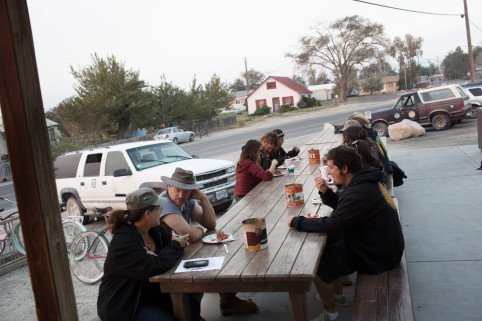
And there’s more going on than delaying the inevitable return to the so-called real world, where you have to figure out where you’re going to live, and work, and eat, and what bigger responsibilities you are going to tackle. Yes, there is no doubt that it is a pleasant experience to put that all aside for a time and do things of communal benefit, and generally be considered rock stars in the process.
But it’s more than that, and we think Jessica was pretty close to the heart of the matter when she was talking about watching the desert return to all its barren beauty.
“Do you know anything about Japanese architecture?” she asked on the porch of the Saloon one night. Not much, we answered.
“Well, they always leave empty spaces, so there’s room to let the new things come in,” she said. “And that’s what we’re doing.”
Yes. Playa Restoration is really about the process of re-creating the empty space of the Black Rock Desert, so that all the new things can find their way there again. Step after step, block after block, day after day, restoring the emptiness. Dust to dust.
Thanks, Resto crew.

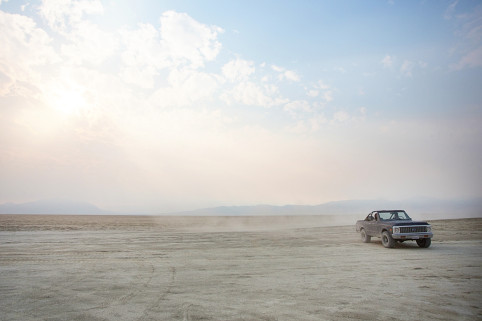
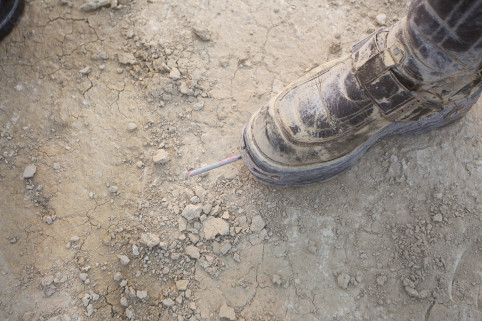
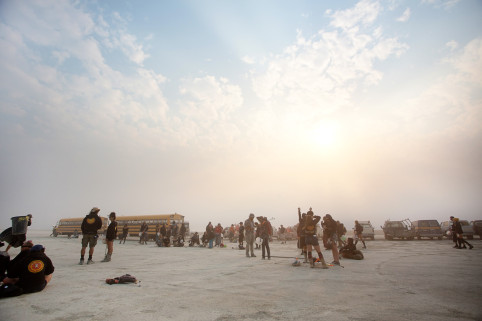
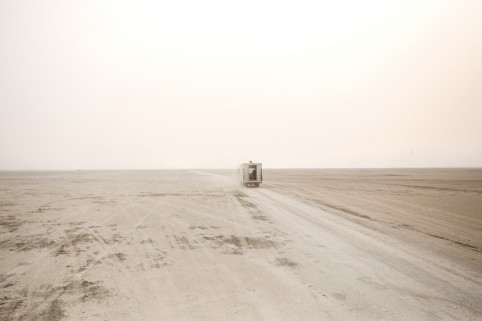
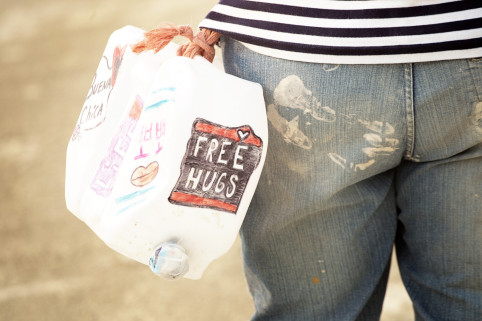
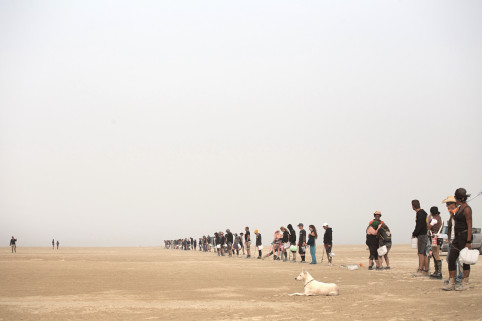

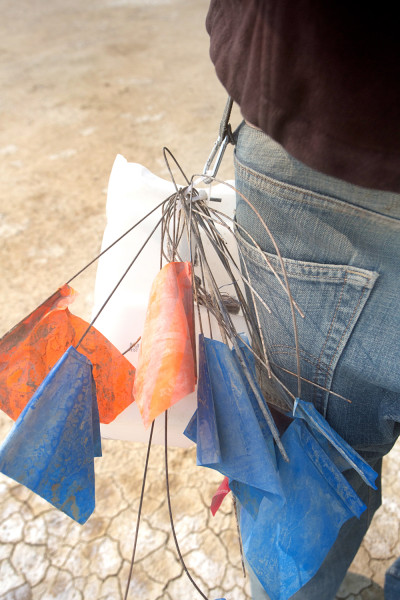

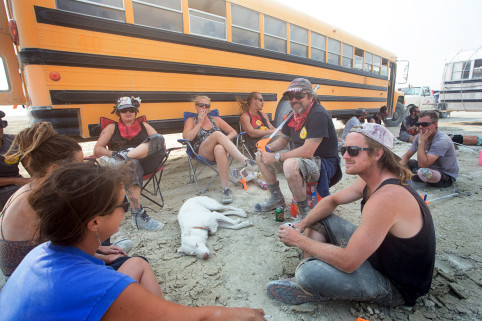
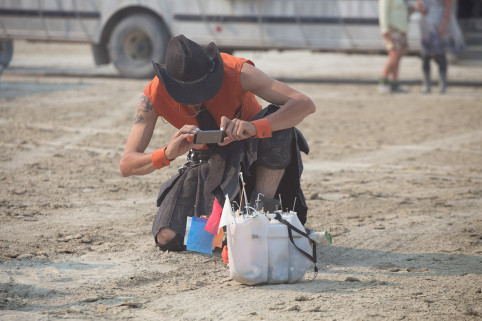

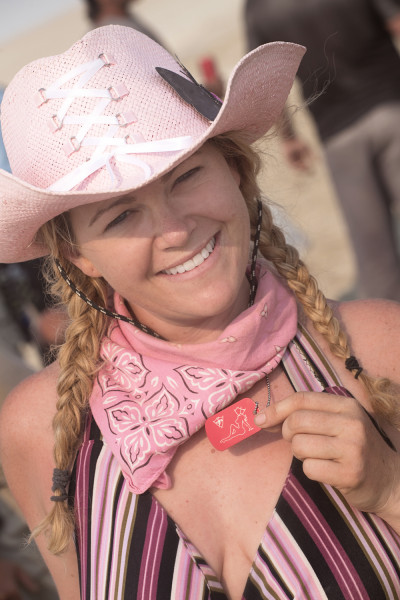
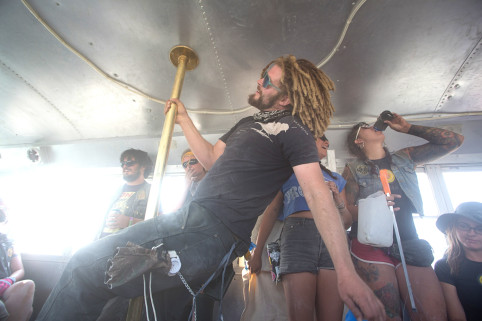

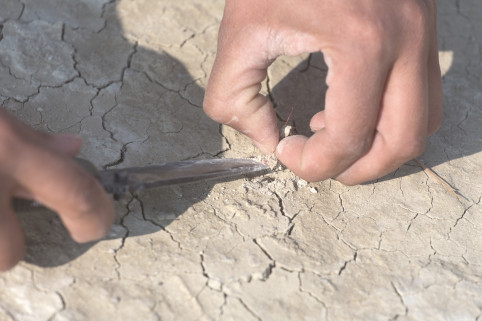

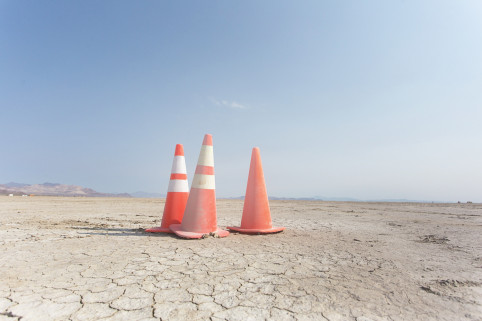
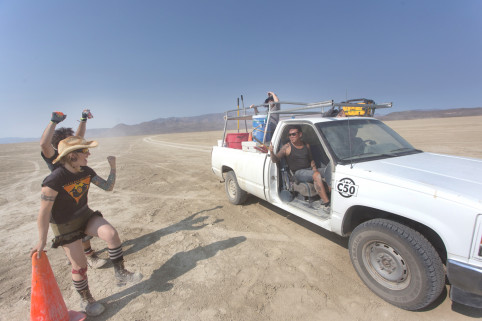

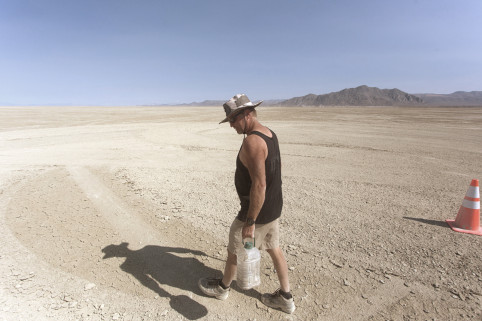

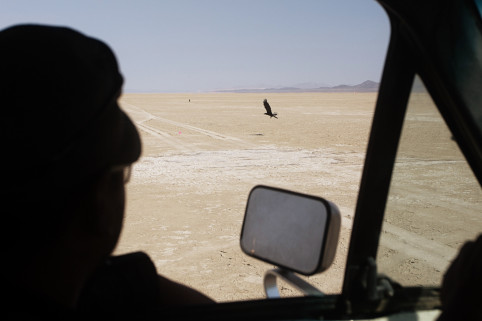
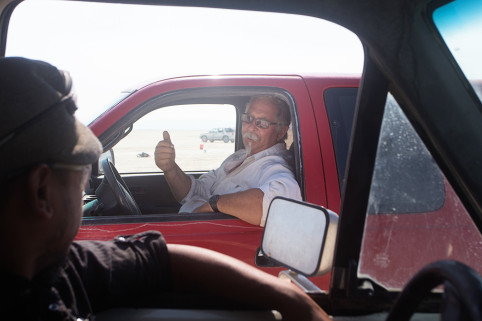

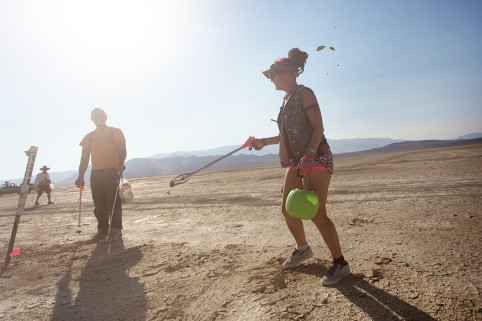
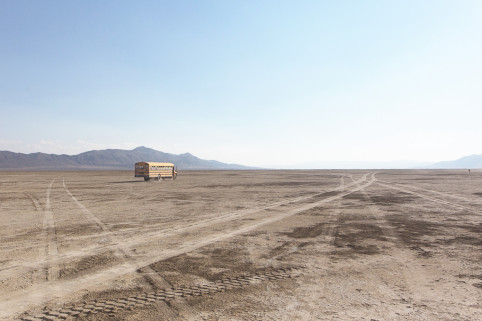
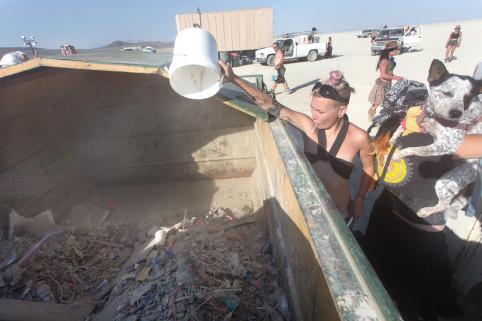

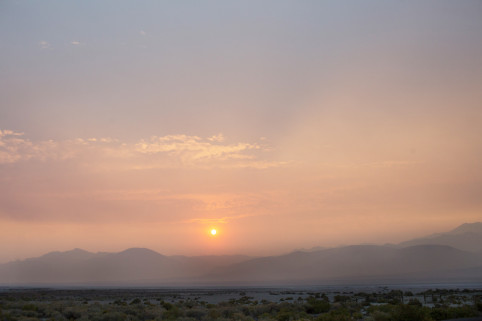
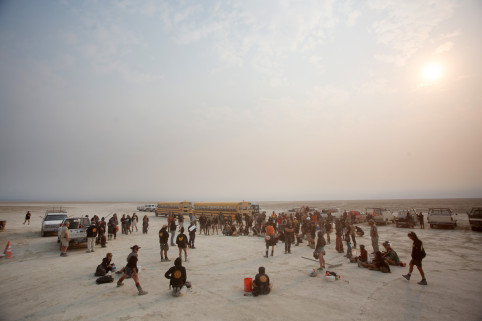
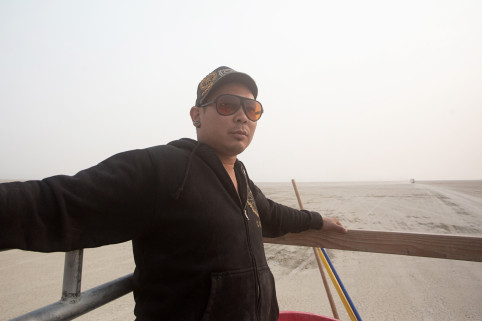
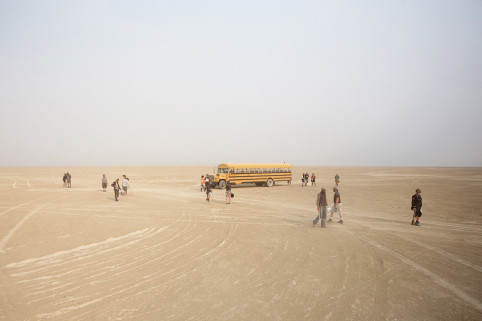
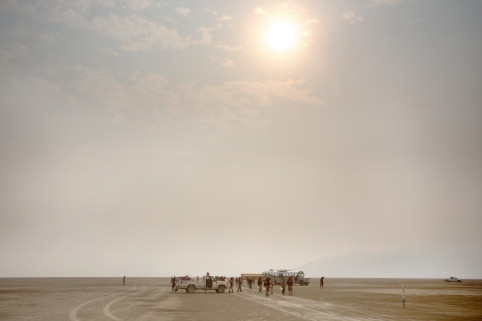
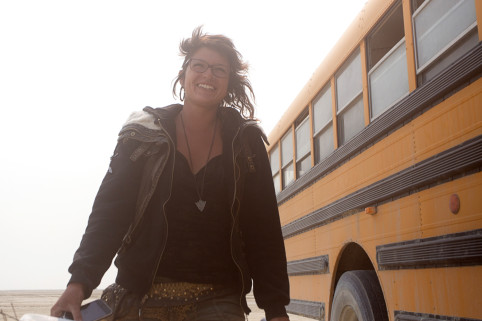
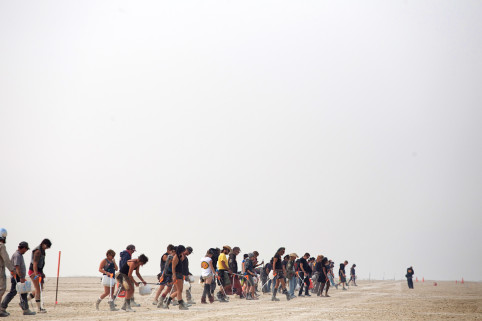
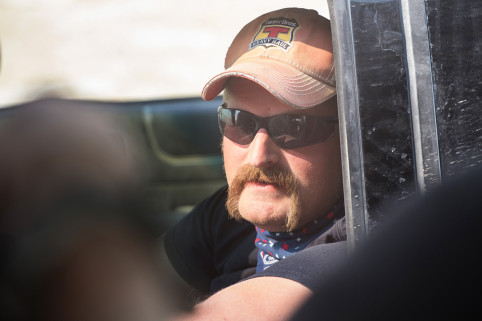

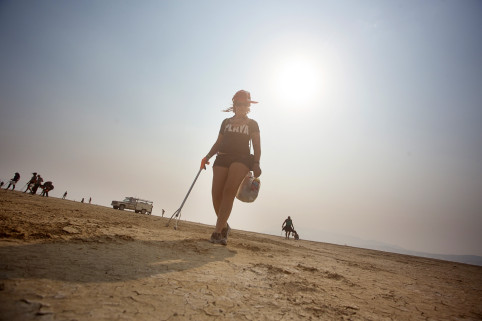
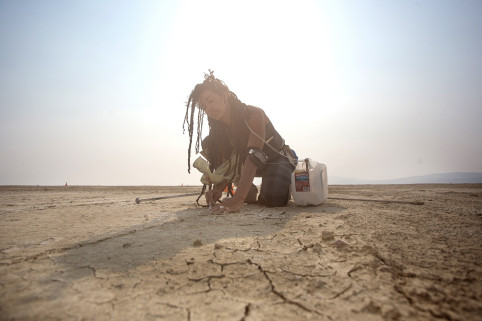
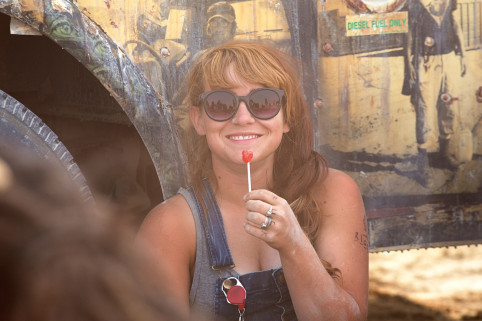
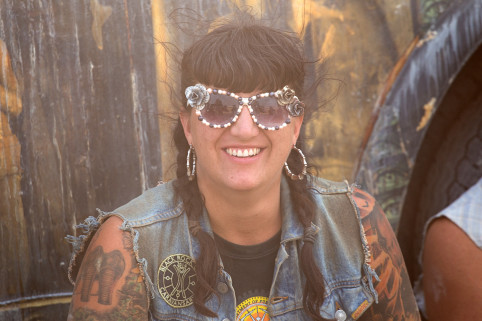

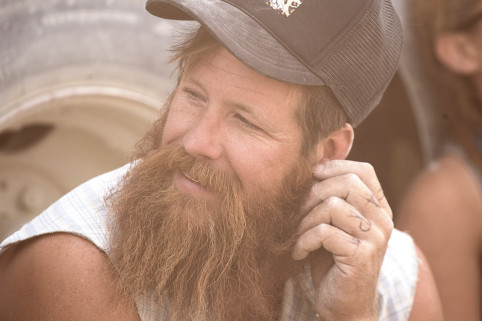
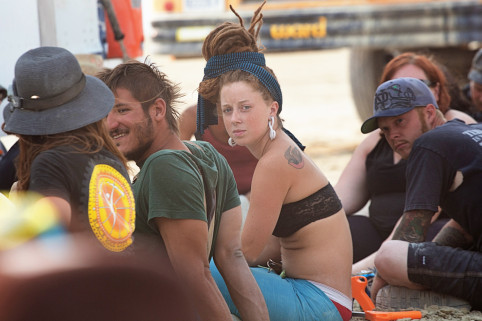
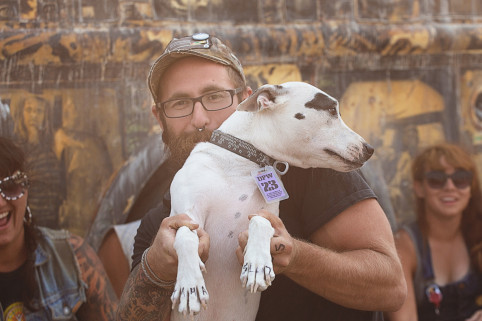
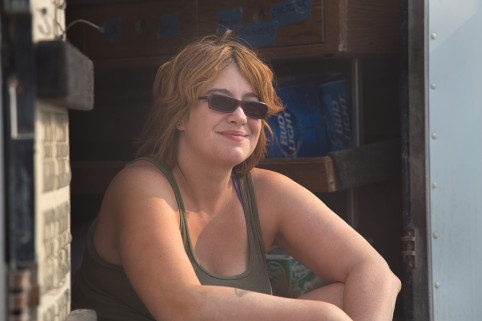

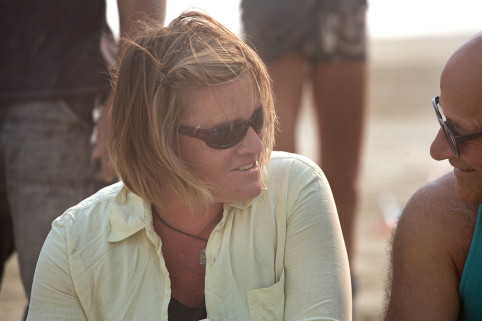
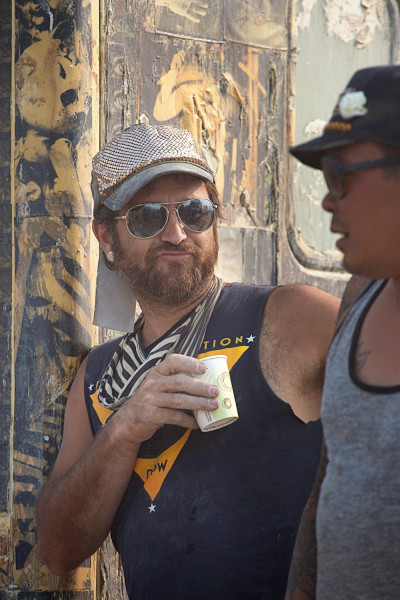
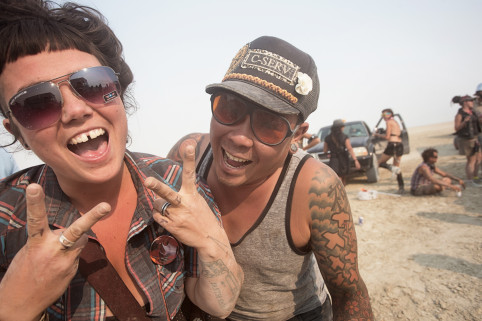
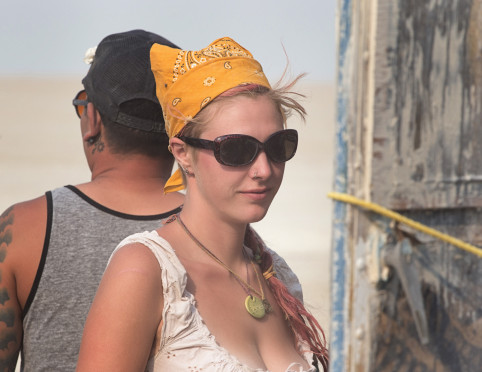
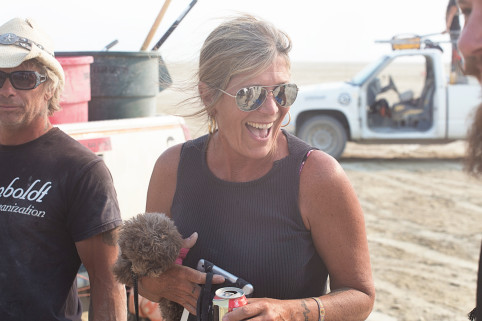

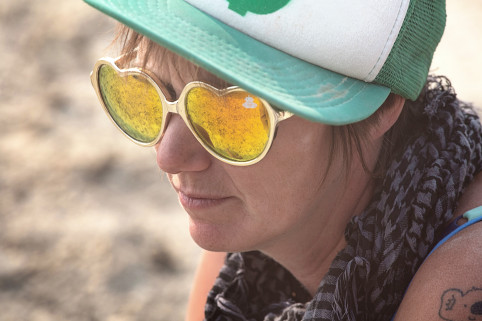
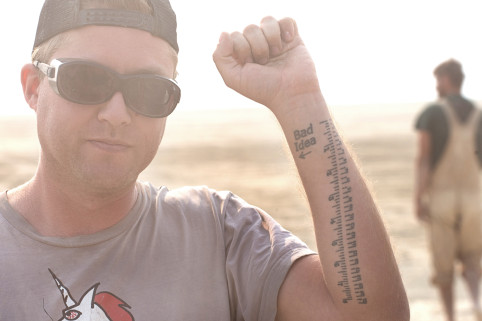
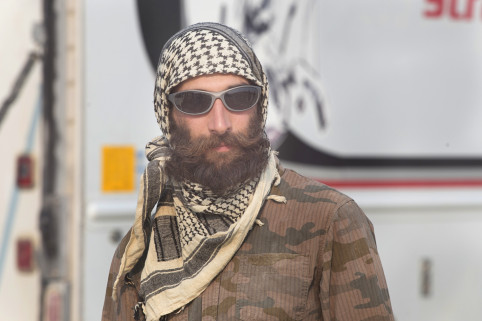

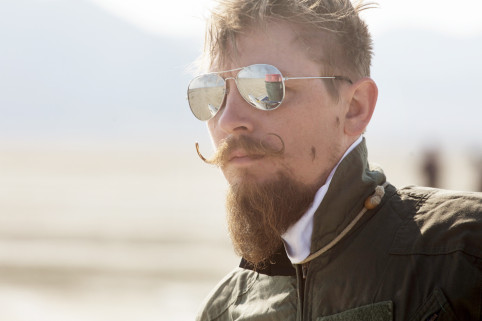


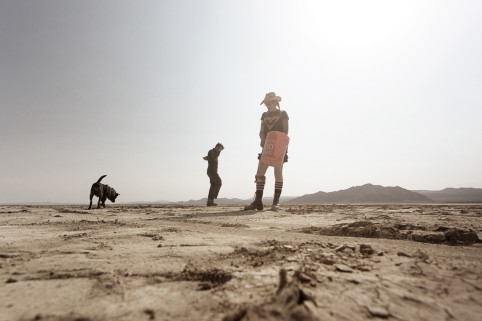
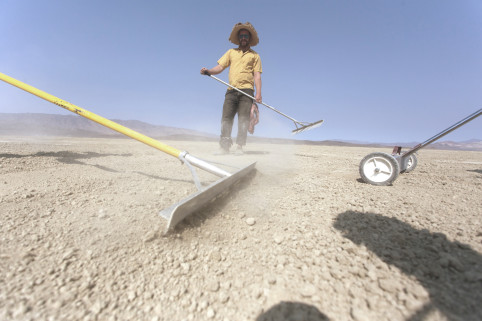
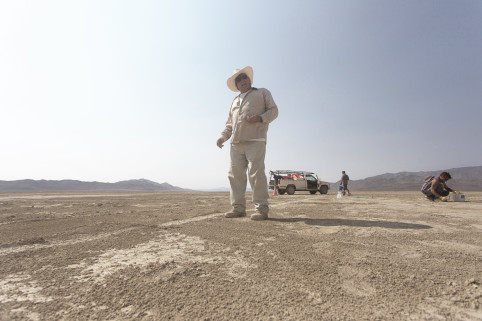
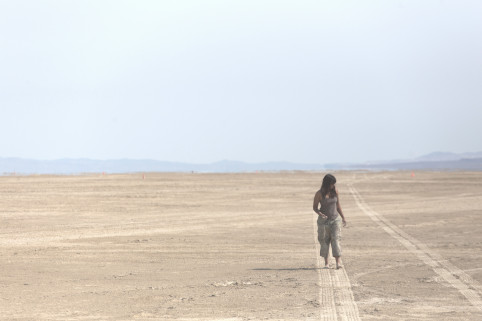
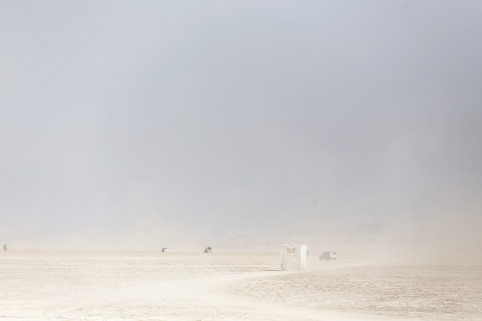
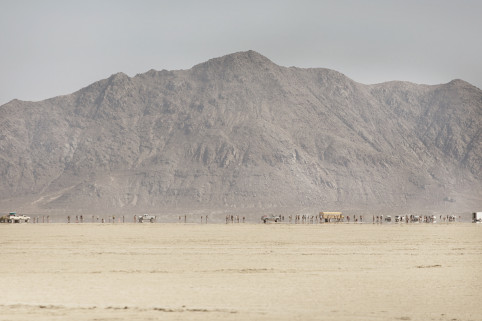
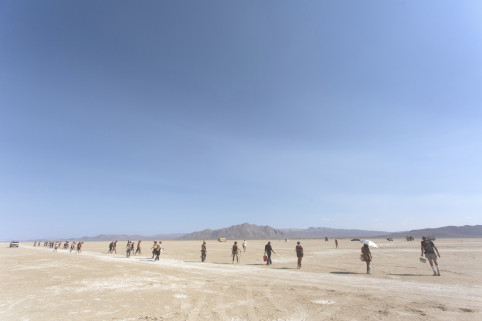
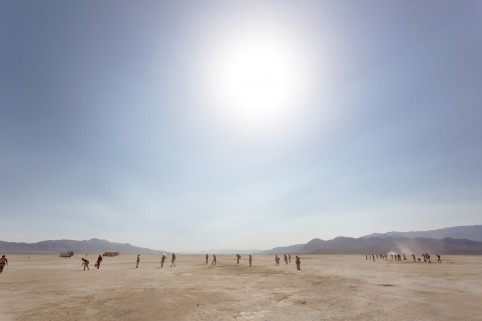

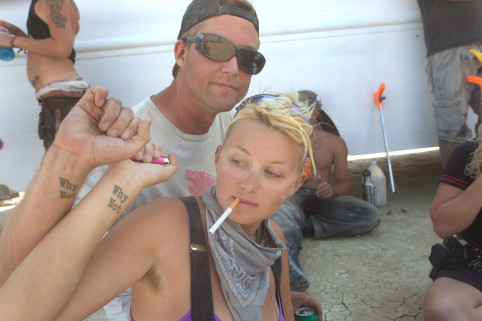
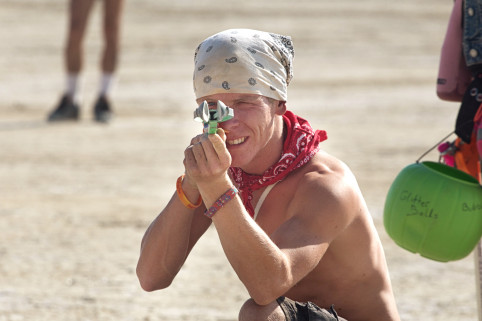


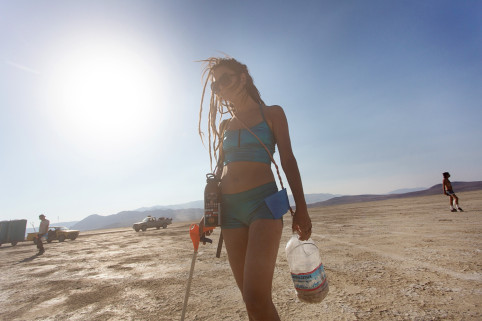

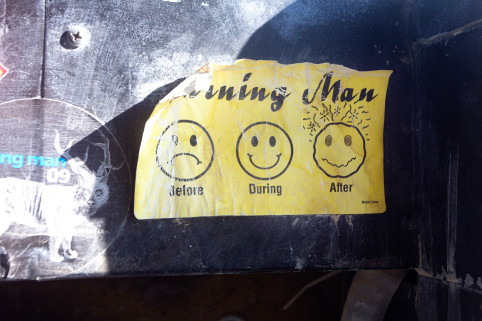
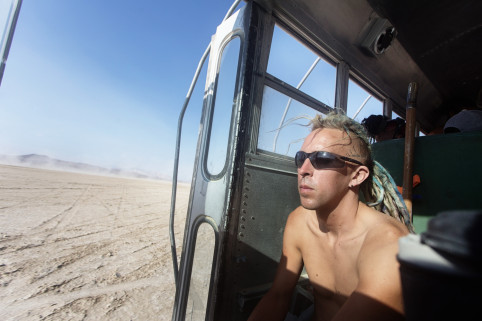
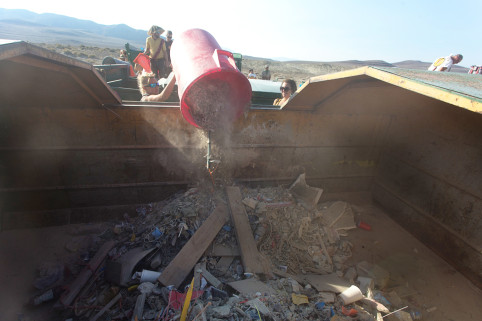
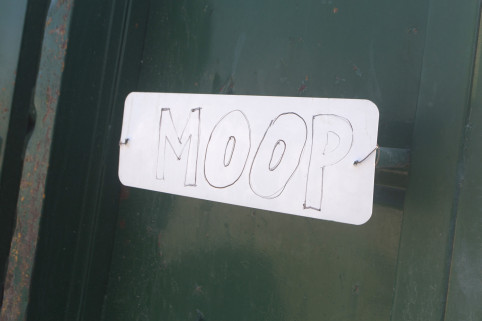
Thanks for the pictures.
I love Xeno’s new tattoos.
Report comment
Fuckin’ pure gold superstars – thank you!
Report comment
I love every one of these people. My gratitude cannot be expressed in words.
And a thanks to the writer and photographer for documenting this. I understand a little better what the resto crew does and experiences. Thanks again.
Report comment
I can honestly say, this was one of the best articles I’ve read in a very long time for I could feel it and wanted to cry, hug and dance all at the same time. I know that does not make since, but the Resto Crew are the true heroes. Thank you for all your efforts, time and the will power. I bow to you all as I fold my arm to my waist!
Sgt Pepper
Report comment
Way to go Curley!
Love this pics!
Hope you can show the one of the final haul in the dumpster.
Report comment
Love the Resto guys a ton! Thank you sooooo much!
Report comment
Honestly these are the pictures to show when you want to convey what Burning Man’s about. Thanks for letting the rest of us see playa restoration and its people in so much detail. Even my middle aged bones are half tempted to go help out.
Report comment
*** I’ve been singing Korean Songs ALL DAY out on the line…….. and missing my beautiful SAN FRANCiSCO…… yeap been out here SOOOOO LONG!!! Still these pictures will remind me LATER of THESE GREAT BURNERS—- whether they want to admit it OR NOT they ARE THE BEST BURNERS—- FREE HUGS MOTHER FU%$#^@&()ERS!!! I have thoroughly enjoyed my RESTO time with DPW and will wear our badge with pride and snark!!! Buena Chica loves ya!!!
Report comment
Deepest bow. Thank you so much!
Report comment
Wanna know *yet* another thing that’s super cool about Burning Man? The Resto Team. Playa superstars.
I know it’s a BLM requirement to leave no trace, but even if it wasn’t I would not want it any other way. This is fantastic.
Report comment
It seems like the heroic efforts of playa restoration are somewhat undervalued. It looks like they number between 100 – 150. If they were paid what they deserve – between $100 and $150 for an 8 hour day in extreme conditions (and that would be a savings), then BMorg is looking at a daily saving rate of about $10,000, minimum. Over one month, that would be $300,000+
Thank you, play restoration crew, for saving so much money. Does anyone know if the founders fly business class or coach?
Report comment
Fuck your bike
Report comment
What a sexy group of all stars! I’m jealous, wish I could be out there with y’all…
Report comment
Rock stars! Thanks for the work you do!
Report comment
You are the heros of Burningman by making it possible for us to come back next year – you guys rock!
Report comment
Superstars!
Report comment
Words are not enough!…but with as heartfelt energy as I can muster online> Thank You! Thank You! Thank You!
Report comment
It’s good to see women out there kicking ass and proving they can do a bit more than make sandwiches. #HeforShe
Report comment
Truly amazing, I will never complain about how much work I do at burningman,you people rock !!!
Report comment
Thank you so much DPW and the Resto team, you have my thanks and gratitude you’re all doing a hell of a job!
Report comment
Mad respect for D.A. and the entire crew.
Curley it was a pleasure to meet you this year at Mecca.
Thank u all for your hard work.
You are the standard.
Fuck your burn.
*J
Report comment
Thank you to you priceless and crazy people! We so appreciate your efforts.
Report comment
Yet another wonderful post – thank you Curley! And thank you D.A. and the entire Resto crew for your truly heroic efforts.
Report comment
I only had a few days in Gerlach with the Resto crew, but I can say that they are not just awesome people for what they do, but also welcoming and fun. Thanks for an great time!
Report comment
If you would just pave this you could use one of those Nascar jet blowers and have the entire job done in about 3 hours. And what’s the deal with the dogs? I thought you weren’t supposed to bring Fido to the playa?
Report comment
Comments are closed.